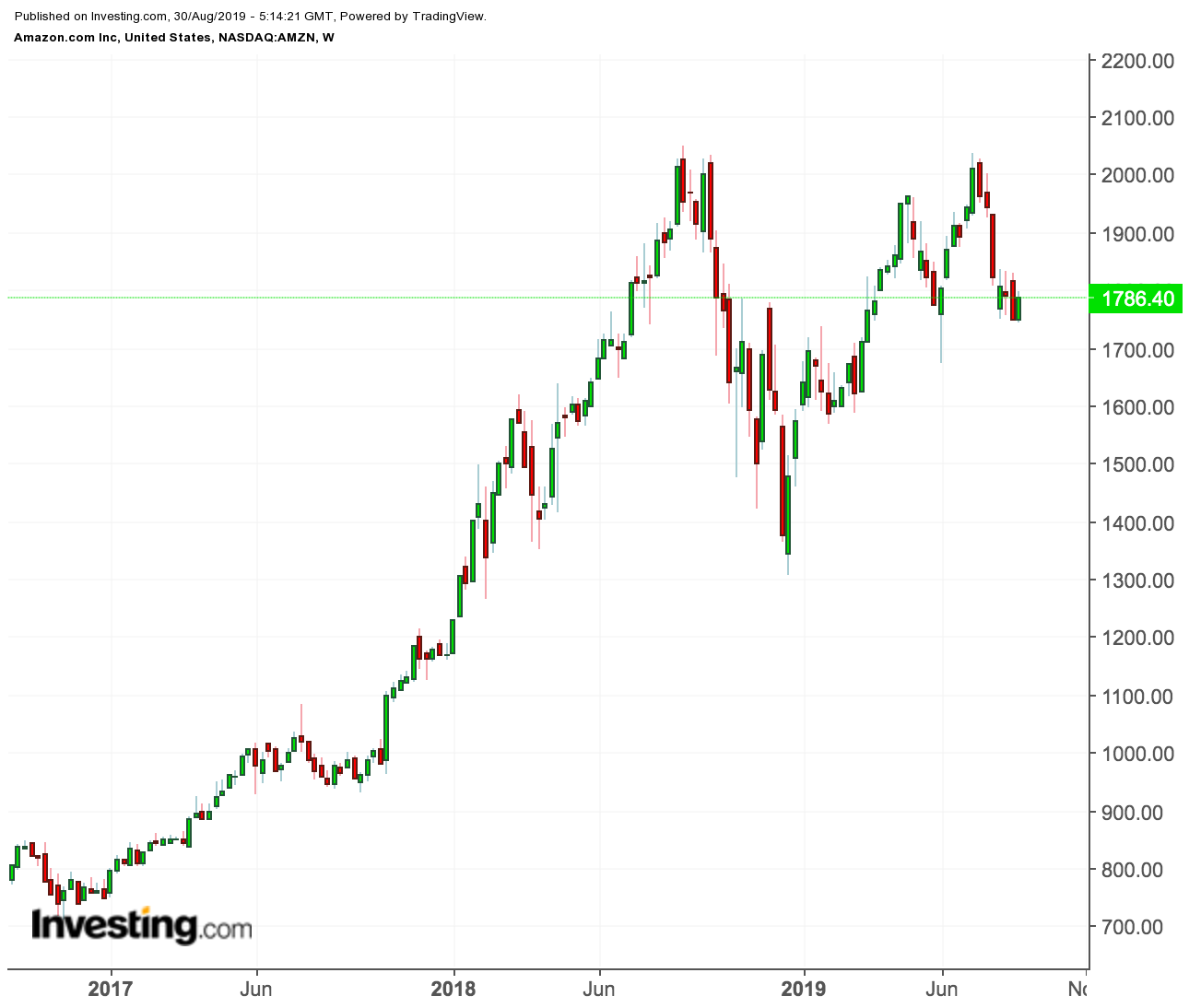The furious, sustained rally that pushed Amazon.com (NASDAQ:AMZN) shares up some 427% over the past five years is losing its steam and many investors are taking a second look at the technology behemoth which handles half of all e-commerce in the U.S.
Trading at $1,786.40 at yesterday's close, Amazon's shares are down about 11% in the past year. These losses are only second to the worst performer Netflix (NASDAQ:NFLX) in the group of top five technology stocks known as FAANG.

To support a bear argument, some analysts cite Amazon’s slowing sales growth, its increasing cost of doing business, and intense regulatory scrutiny which could force the company to alter its current business model.
In this environment of uncertainty, the first major short-term challenge for Amazon (NASDAQ:AMZN) is to control its spending and improve its margin. The online retailer’s second-quarter earnings showed there is no quick fix on this front.
The company’s costs tied to its one-day delivery service drove up expenses and reduced efficiency in the second quarter. The investment needed to send merchandises in one day will put a strain on earnings for the rest of the year, Chief Financial Officer Brian Olsavsky told analysts on a conference call.
That situation isn’t encouraging for short-term investors who were attracted to this stock by the company’s growing profitability. From a 7.4% operating profit margin in the first quarter, that figure slipped to 4.9% in the second quarter. The third-quarter margin, based on the midpoint of Amazon’s forecast, implies a margin below 4%.
Analysts on average had expected an operating profit margin of nearly 6% for the second quarter and even higher for the third,
Amazon’s Long-Term Appeal Intact
But despite these trouble spots, we continue to like Amazon (NASDAQ:AMZN) stock for long-term, buy-and-hold investors. Investing in technology stocks isn’t without risks, especially at this late stage of the bull-cycle which is showing some signs of peaking. But for long-term investors, Amazon is still one of the best bets among high-growth technology stocks.
First, the faster one-day shipping is attracting more shoppers to Amazon (NASDAQ:AMZN) which means more growth for the company. Amazon reported a nearly 20% jump in revenue during the second quarter compared with a year ago, and the midpoint of the company’s guidance suggests a similar growth rate for the three months ending in September.
If Amazon (NASDAQ:AMZN) is succeeding in expanding its sales, investors shouldn’t worry about costs and a little hit on the margins, in our opinion.
Another reason that makes us comfortable in recommending Amazon (NASDAQ:AMZN) stock is the company’s wide economic moat, a term coined by the world’s most successful value investor, Warren Buffett, to define companies which have a sustainable competitive advantage. Amazon certainly fits nicely in this category. It’s clear that retail sales will inevitably shift to the internet, which now accounts for about 15% of U.S. retail sales excluding restaurants.
Besides the company’s wide competitive advantage in e-commerce, Chief Executive Officer Jeff Bezos is also opening several new areas of growth beyond the low-margin business of selling goods online.
Amazon (NASDAQ:AMZN) runs the biggest cloud platform in the world, serving large corporate customers. Amazon Web Services, known as AWS, grew at a rate of 37%. Amazon’s digital advertising business, another high-margin venture, is expanding at a triple-digit rate. Backed by these extremely profitable units, Amazon has been able to disrupt many industries and can continue to do so for a long time.
Bottom Line
Because of Amazon’s premier position in many of the areas in which it operates, its stock is one of the safest bets in the tech sector. Amazon's e-commerce business continues to show a blistering growth trajectory and its earnings momentum from AWS and digital advertising remains robust. These strengths make its stock a good candidate to buy on weakness.
